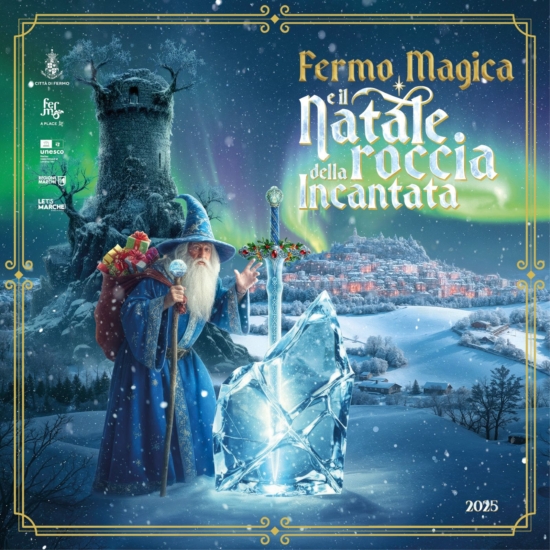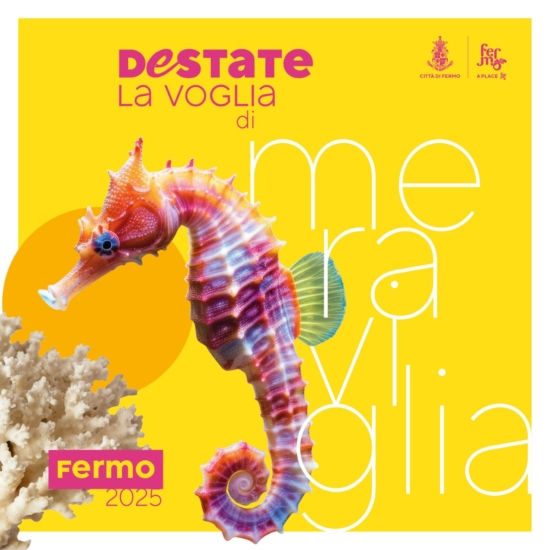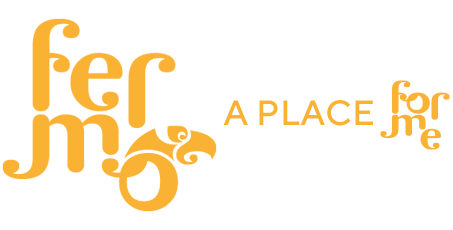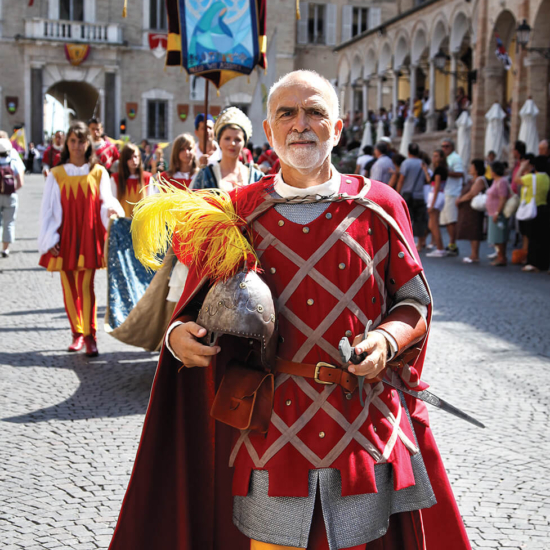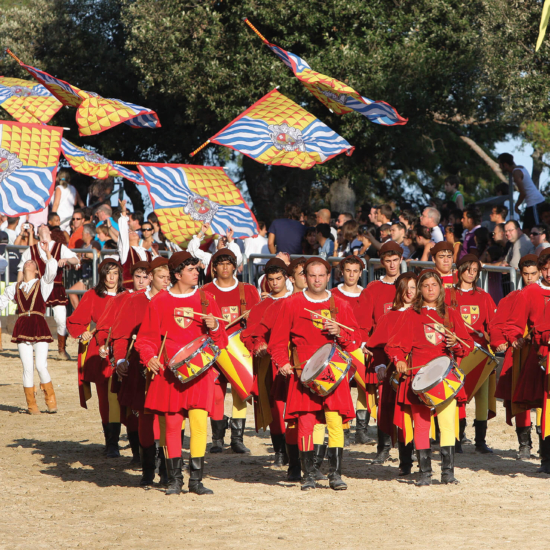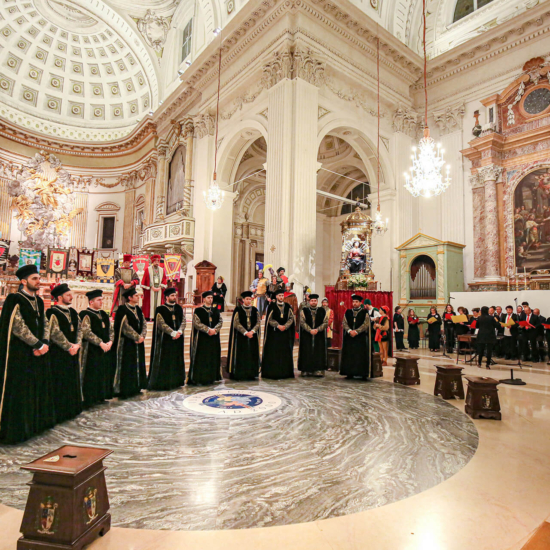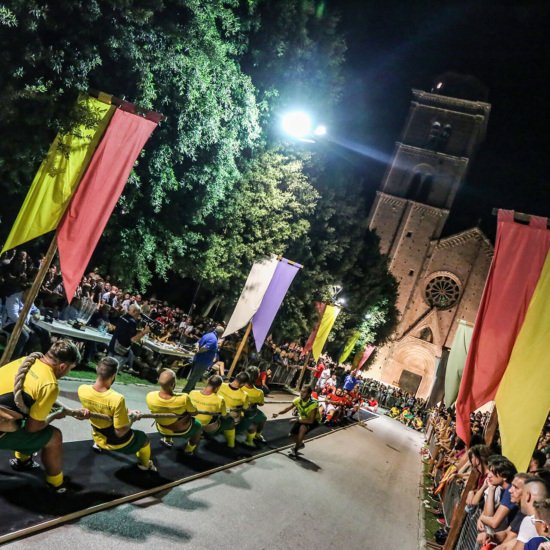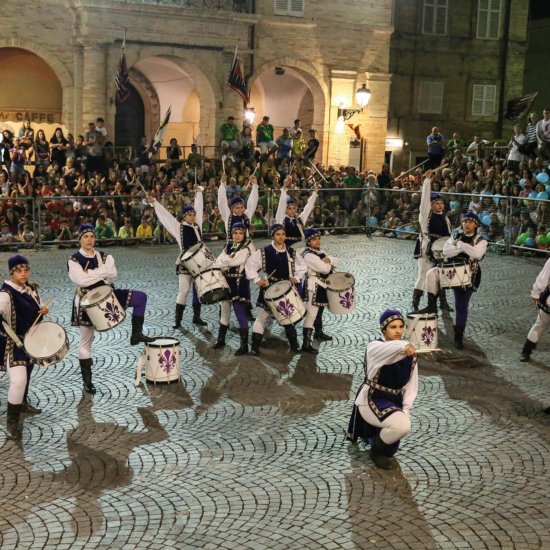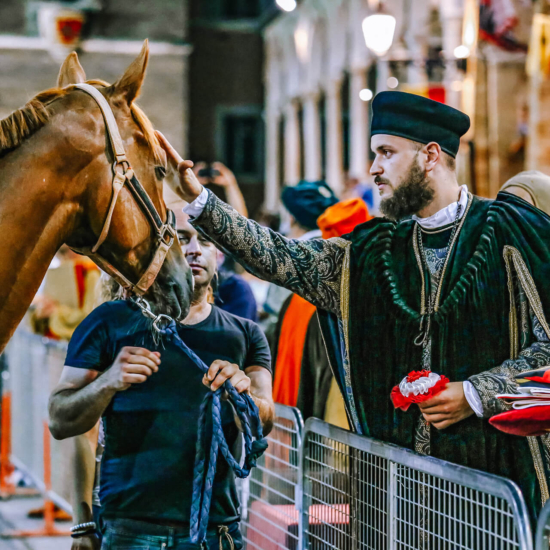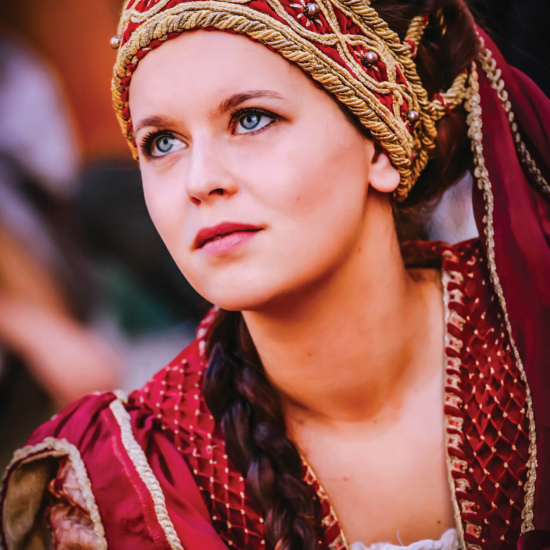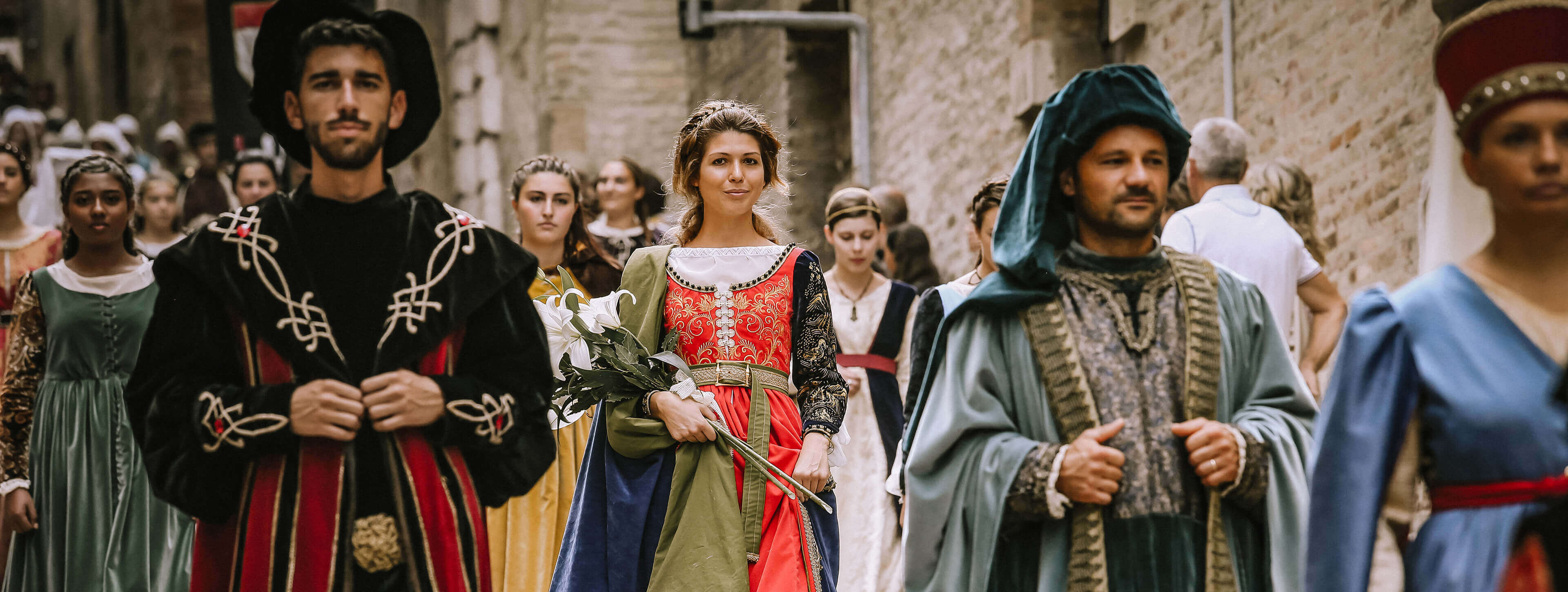
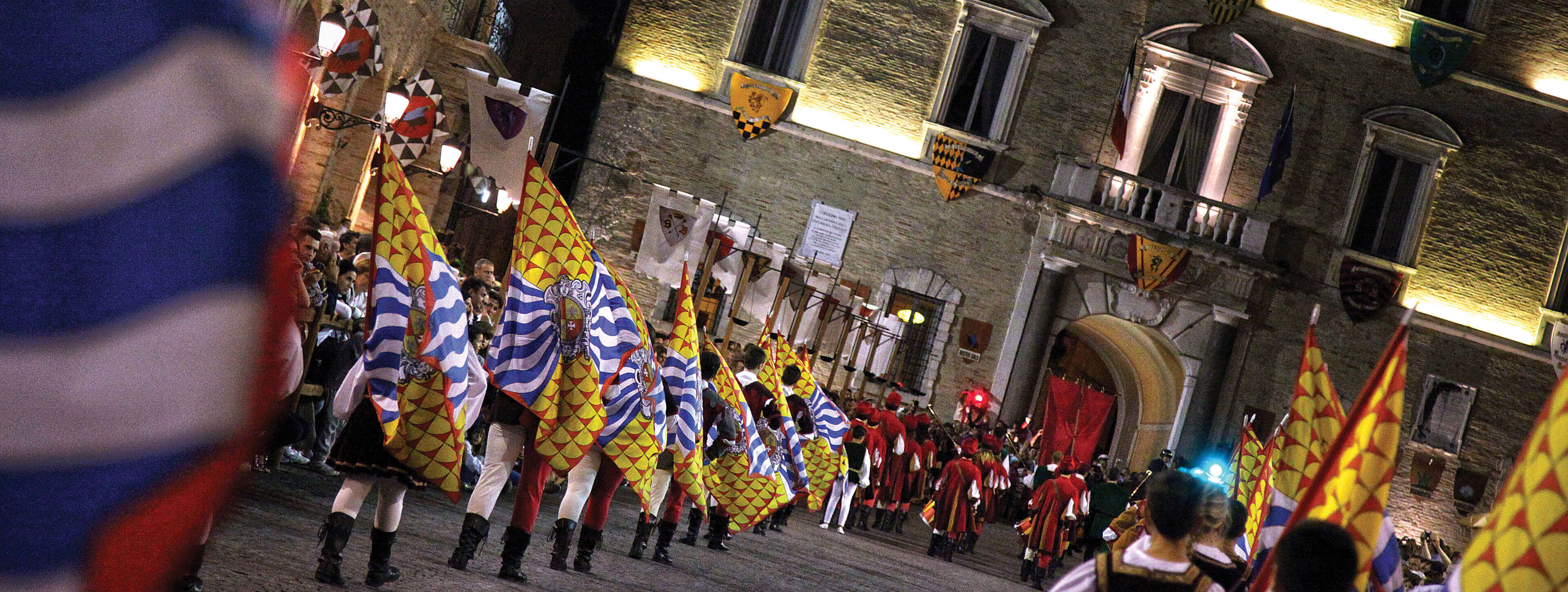
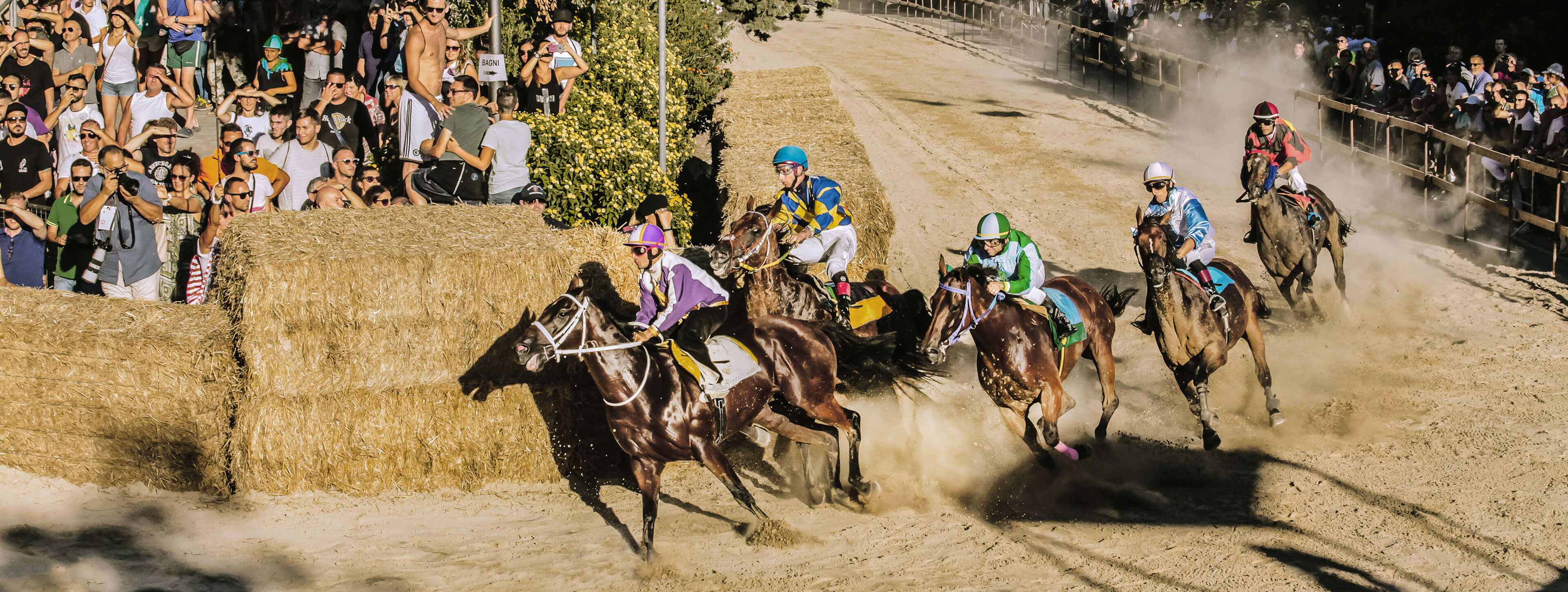
Cavalcata dell'Assunta in Fermo

The Cavalcata dell’Assunta in Fermo, of which the earliest historic references dates back to 1182, is an historical re-enactment that takes place in the evening of 14 August and in the afternoon of 15 August in Fermo’s streets.
In its more modern and recent edition, it turned forty years in 2021, but it’s still able to thrill Fermo’s citizens and tourists coming in Marche.
Ten contrade (city quarters) take part to it and each of them has a Priore (Prior) as leader and it’s characterized by its own colours and by a coat of arms, a shield with the Contrada’s motto and a symbol recalling its history and features.
The historic Parade of Palio dell’Assunta in Fermo
Precisely as in Middle Ages, the Cavalcata dell’Assunta is made up of a Parade that passes by the city centre on 14 August in the evening.
The parade’s attendees are contradaioli (city quarter’s inhabitants) and the political personalities of the city, all of them wearing amazing clothes of medieval inspiration. Great attention is paid also to the loyal recreation of ever existed medieval clothes: bystanders will be able to admire ladies with hair tied with ribbons (called a coazzone), wearing gamurre, petticoats, covered with pellande, wide cloaks sometimes in furs or with decorations. Men will wear hats like the one called a chaperon, in different shapes and with one or more points and sometimes worn as a scarf.
The parade will cross the city again the next day, on 15 August in the afternoon, when the procession goes along the same itinerary on which shortly after the city quarters’ horses will whiz by.
The Medieval Games during Fermo’s Palio
The Palio dell’Assunta days start with the reading of the Bando della Cavalcata e del Palio (the Cavalcata’s and Palio’s announcement), followed by the Investiture of the city quarters’ Priors and Gonfaloniers and the St. Mary Fair.
Besides the true and proper race, the city quarters face in medieval games like:
- Tiro alla fune or tiro al canapo (tug of war);
- the Astore, that is historical archery
- the Golden Rooster, a game among the Tamburini (drummers) of each contrada
You can find also the traditional dishes of Marche prepared by the Hostarie in Piazza del Popolo; every contrada organizes its Hostaria to enjoy excellent local dishes.
The Berbers’ Trade and the Race to Palio dell’Assunta
The race, which takes place in two heats on 15 August in the afternoon, is made up of the fundamental moment of the Berbers’ Trade, that is the draw to assign to each Contrada a horse.
It starts drawing the Contrades’ names from the helmet of the Master-at-arms belonging to the last winning Contrada. A page draws the names, while the Prior of each drawn Contrada will pick from the helmet of the city Master-at-arms the name of the horse that, from that moment on, will be linked with its Contrada.
A cockade with the city quarter’s colours is pinned on the horse, called bàrbero (berber); a jacket with the same colours is given to the jockey that will take part to the race by the Dama di Contrada (the Lady of the Contrada).
The Cavalcata dell’Assunta starts following the strict rules that govern the Palio’s start, in two different heats. The first placed of each heat will face in the final race, which will sanction the winner of Palio dell’Assunta. This name comes from the prize that the winning Contrada wins, that is a magnificent and fine drape that testifies the victory of the prestigious event.

